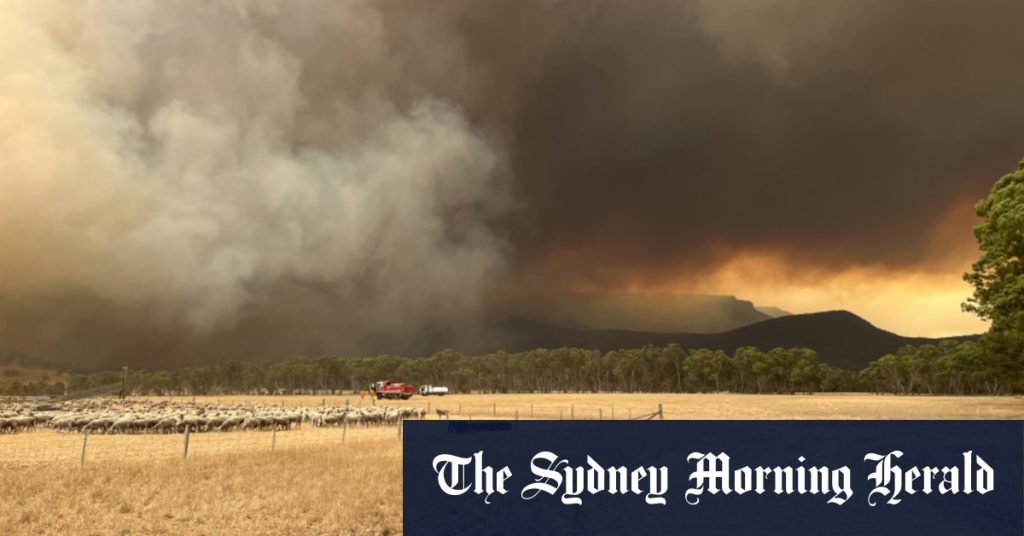The state of Victoria, Australia, is bracing for potentially catastrophic bushfires, with conditions predicted to be the worst since the devastating Black Summer fires of 2019-20. A total fire ban is in effect across the entire state, and extreme fire danger ratings have been issued for most regions. The Grampians region, a popular tourist destination, is a key area of concern, with the existing fire expected to spread rapidly under the influence of strong winds and dry conditions. Authorities are particularly worried about a predicted wind change, which could push the fire in unpredictable directions and significantly complicate firefighting efforts.
The town of Halls Gap, nestled at the foot of the Grampians, has been evacuated, with residents urged not to return. Locals have expressed anxiety and uncertainty about the evolving situation, acknowledging the unpredictable nature of the fire and its potential impact on their homes and livelihoods. Pomonal, a town still recovering from bushfires earlier this year, is also under threat, with residents warned to be ready to leave at a moment’s notice. Some residents, like Marc Sleeman, are choosing to stay and defend their properties, relying on the firebreaks created by the previous fires. However, they are prepared to evacuate immediately if the fire changes direction or intensifies.
The State Control Centre has emphasized the urgent need for residents in high-risk areas to evacuate early, seeking safety elsewhere. They’ve stressed the importance of clear roads for emergency services and urged people to avoid unnecessary travel. The message is clear: this is a day to stay indoors and prioritize personal safety. Authorities are particularly concerned about the strong winds, which have the potential to carry embers long distances and ignite new fires, putting even more communities at risk. The focus is on proactive evacuation and minimizing the potential for loss of life and property.
The challenging weather conditions are complicating firefighting efforts. The forecast wind change is expected to make the fire even more unpredictable, making it difficult for firefighters to contain the blaze. The combination of strong winds, dry vegetation, and extreme heat creates the perfect storm for rapid fire spread. While some light rain has fallen in certain areas, it is not expected to have a significant impact on the fire’s behavior. The eerie calm in some towns, devoid of traffic and the usual hustle and bustle, underscores the seriousness of the situation and the sense of anticipation as the fire threat looms large.
The situation is being closely monitored at both the state and federal levels. While the Australian Defence Force has not yet been deployed, the federal government is prepared to provide assistance if requested. This could include access to the national stockpile of emergency supplies, support from Disaster Response Australia, a national volunteer organization, or deployment of the ADF. The Bureau of Meteorology is providing regular updates on the weather conditions, particularly the anticipated wind change, which is expected to sweep across the state during the day and into the night.
The focus remains on community safety and preparedness. Authorities are urging residents to heed warnings, stay informed, and take all necessary precautions to protect themselves and their families. The experience of Black Summer underscores the devastating potential of bushfires under these extreme weather conditions, and authorities are determined to prevent a repeat of that tragedy. The coming hours will be crucial in determining the extent of the fire’s impact and the effectiveness of the preventative measures being taken. The communities in the path of the fire face an anxious wait, hoping for the best but prepared for the worst.

